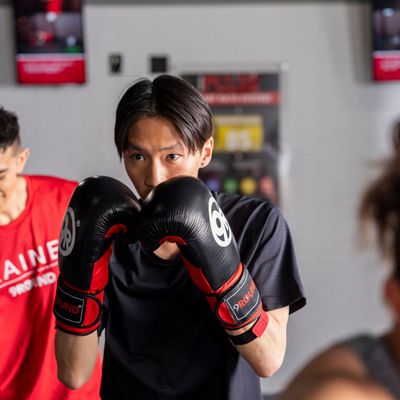Weights 101: Signs Your Weights Are Too Heavy

If you’ve been following along with our Weights 101 series, then you’ve already learned how to find the right starting weights and how to know when it’s time to increase your weights to keep making progress. However, another common problem you might encounter is lifting weights that are too heavy. So, for our third and final post of this strength training series, we’re sharing some signs to look out for to make sure you’re not overdoing it with your weighted exercises.
Your Exercise Form is Suffering
Incorrect weight training technique can lead to injuries that impede your ability to increase muscle size and definition, which is why it’s extremely important that you practice using good exercise form when using weights. If at any time you feel like the amount of weight you’re lifting is messing up your form or limiting your range of motion, you need to take a step back and reevaluate what you’re doing. This can be a clear indication that the weights you’re using are too heavy for your current skill level.
You never want to sacrifice technique to lift more weight — instead, you should lower the amount of weight you’re using until you can confidently complete each move with proper form. It’s about aiming for quality reps over quantity of weight, as this will help prevent injuries and allow you to get the full benefits of each move. Eventually, after a few more sessions, you should be able to upgrade to heavier weights and tackle them with proper form.
You Can’t Complete a Full, Quality Set
If you remember back to the first Weights 101 blog about finding your starting weights, then you’ll know different strength goals can dictate different rep counts depending on what you want to achieve. But, powerlifting aside, if you’re unable to complete an entire set of 8-12 reps with the weights you’re using, they might be too heavy.
At 9Round, we focus on building lean muscle to help burn fat and tone up while also increasing strength and endurance, which means most of our exercises fall between 6-12 reps per set. You want to be able to make it through all the reps required with good form. If you’re not able to get past even the first five, then it’s a good sign your weights are too heavy. Cut back on the amount of weight you’re lifting until you feel as though you could do 1-2 more reps after your set — with good form — before needing to rest.
During our KILLER workouts, you have access to a variety of weights, so you can easily find what works for you. You can also ask your 9Round Champion Trainer for help picking out weights if you’re not sure how heavy you should be lifting during your workout.
You Feel Pain Rather Than Your Typical Soreness
It’s perfectly normal to feel sore after a tough workout, especially after you’ve increased your weights to the next level. This is commonly referred to as DOMS, or delayed-onset muscle soreness, and it typically lasts around 24 to 72 hours. However, if you feel excess soreness or actual pain following a workout with heavier weights and it appears to stick around longer than usual, you may have a minor injury that could get worse with exercise, so it’s best to keep yourself from doing more damage before it heals.
Take a day (or two) off from your workouts to give your body time to recover. When you feel like your pain has subsided, then you can get back into the swing of things with a lighter set of weights at first. As you continue to improve and master your form, then you can increase your weights again in small increments to continue working on your strength goals. Remember, you want to feel challenged but not overwhelmed with the weights you’re using, so you can make it through your full set and maybe one or two more reps before taking a break.
9Round is the BEST in kickboxing fitness. Try our KILLER workouts and feel stronger in just 30 minutes with a free session at your local studio. Follow the link below to kickstart your fitness journey with 9Round.


